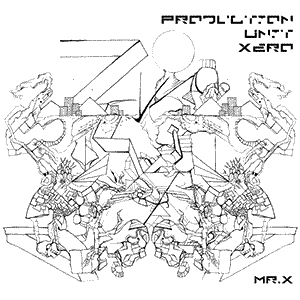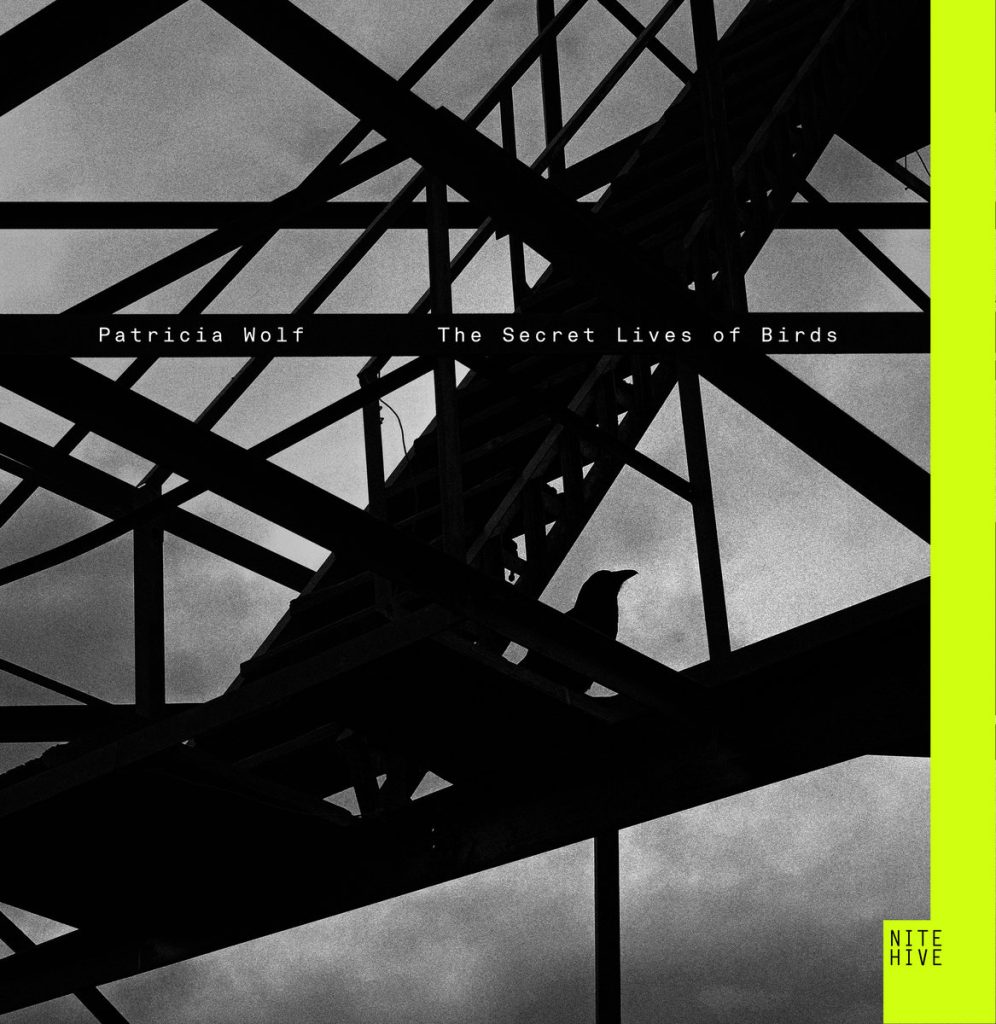Industrial Music Instruments: The Synthesizers and Equipment Behind Electronic Industrial Music
Crafting the Soundscape of Industrial Music: An Exploration of Instrumentation
Industrial music, with its abrasive and mechanized soundscapes, stands as a distinct pillar in the world of alternative music. Emerging in the late 1970s, this genre has continually evolved, largely due to its innovative use of technology and sound manipulation. The sonic palette of industrial music is characterized by harsh rhythms and a layered approach to sound design, using a variety of electronic and acoustic instruments to create its signature dystopian feel.
The Foundations: Synthesizers and Drum Machines
At the heart of industrial music is synthesizers and drum machines. These are tools that have defined and shaped the genre since its inception that help create atmospheric, often ominous soundscapes. The Moog Minimoog, a monophonic analog synthesizer, was one of the early synthesizers adopted by industrial musicians due to its rich, powerful sounds that could be heavily manipulated. The ability to alter pitch, frequency, and modulation via analog synthesis allowed artists to explore a broader sonic spectrum, essential for the genre’s avant-garde sound.
Another staple in the industrial toolkit is the Roland TB-303 Bass Line, a machine initially intended for bass accompaniment for solo guitarists but famously repurposed by industrial (and later acid house) musicians for its capacity to produce squelchy, aggressive bass lines that became a hallmark of the genre.
Drum machines like the Roland TR-808 and TR-909 have also been instrumental in industrial music production. These machines provided the pounding, relentless beats that are synonymous with industrial tracks, with the TR-808 being particularly noted for its booming bass drum sounds and metallic snare drums. The programmability of these machines allowed musicians to create complex, polyrhythmic patterns that were not only rhythmic backbones but also integral melodic elements within their compositions.
Sampling and Manipulation: Expanding the Sound Palette
The advent of sampling technology marked a significant evolution in industrial music, allowing artists to incorporate a wide array of sounds into their compositions. Samplers like the Akai MPC series enabled musicians to capture and manipulate any sound, from mechanical noises and spoken word samples to ambient environmental sounds. Industrial music often utilizes these sampled sounds in a rhythmic context, turning everyday noises into percussive elements that enhance the genre’s mechanical and sometimes chaotic aesthetic.
Effects processors play a crucial role in shaping these samples and other sound sources, with devices like the Eventide H3000 Ultra-Harmonizer being particularly popular among industrial artists. This device allows for complex pitch shifting, delay, and modulation effects, transforming straightforward samples into eerie, unrecognizable soundscapes that contribute to the music’s unsettling feel.
Guitars and Modified Instruments: The Acoustic Element
While much of industrial music leans heavily on electronic equipment, electric guitars and basses are also prominent, especially in subgenres like industrial rock and industrial metal. These instruments are often processed through a myriad of effects to strip away their conventional rock connotations and align them with the genre’s abrasive aesthetic. Distortion pedals, ring modulators, and wah pedals are frequently employed to create more aggressive, textured sounds.
Moreover, industrial musicians are known for their use of custom-made or modified instruments. These can range from modified traditional instruments to entirely bespoke electronic devices that generate unique sounds. The use of these experimental instruments emphasizes the genre’s themes of innovation and dystopia.
Integrating Modern Technology with Legacy Technology
As technology continues to evolve, so too does the instrumentation of industrial music. Software synthesizers and digital audio workstations (DAWs) have become indispensable in modern industrial music production. Programs like Ableton Live and Logic Pro offer extensive sampling, synthesis, and processing capabilities, allowing artists to compose and manipulate sounds in real-time with precision that was unimaginable in the early days of the genre.
Virtual instruments and plugins have also expanded the possibilities for sound creation. Synth plugins like Native Instruments’ Massive and Serum provide powerful synthesis capabilities that can emulate the gritty, aggressive sounds required for industrial music while also offering new avenues for sonic exploration.
Industrial music, known for its dark, gritty, and mechanical soundscapes, relies heavily on synthesizers that can produce heavy, distorted, and aggressive sounds. Here’s a rundown of the top 10 synthesizers, both hardware and software, that are pivotal in crafting the signature sound of industrial music:
- Moog Minimoog
- A classic among synthesizers, the Minimoog is renowned for its rich, powerful bass and lead sounds. Its fully analog signal path and intuitive interface make it a favorite for producing the heavy, aggressive bass lines often found in industrial tracks.
- Access Virus
- Known for its versatility and powerful sound engine, the Access Virus series (including TI and TI2) is a staple in electronic music production. Its robust modulation capabilities and harsh oscillators are perfect for creating the complex, layered textures essential in industrial music.
- Korg MS-20
- The MS-20 is famous for its aggressive filter and raw analog sound. Its semi-modular design allows for hands-on tweaking, which is ideal for the experimental sound design often required in industrial music.
- Dave Smith Instruments Prophet-6
- The Prophet-6 is a modern classic, building on the legacy of the vintage Sequential Circuits Prophets. It’s used in industrial music for its sharp, cutting leads and deep, evocative pads that can be both beautiful and haunting.
- Roland TB-303
- Though initially designed for bass accompaniment, the TB-303 became famous for its squelchy, resonant sounds that define acid house. However, its capacity for creating piercing, resonant basslines makes it a valuable tool for industrial music producers.
- Nord Lead
- The Nord Lead series offers virtual analog sound production with immense clarity and flexibility. Known for its fat, analog-like sounds and robust build, it can deliver everything from screaming leads to powerful, distorted pads.
- Elektron Analog Four
- The Analog Four is a modern analog synthesizer with digital control, allowing for extremely precise editing. It’s perfect for crafting custom sounds from scratch, with powerful step-sequencing capabilities that are ideal for the rhythmic complexity of industrial music.
- Yamaha DX7
- Famous for its role in the development of the FM synthesis, the DX7 offers bell-like tones and sharp, digital sounds that contrast well with more traditional analog textures, providing a colder, more mechanical edge used in a lot of classic industrial tracks.
- Arturia MiniBrute
- The MiniBrute is a modern analog beast with a powerful Steiner-Parker filter and Brute Factor™ control for achieving saturation and rich harmonics. Its ability to create aggressive, raw sounds makes it a favorite for industrial noise manipulation.
- Native Instruments Massive
- A software synth that has become a staple in digital music production, Massive is known for its deep, earth-shaking bass and complex modulation capabilities. It’s particularly valued in industrial music for its wavetable synthesis, which allows for creating dense, evolving textures and harsh digital noises.
These synthesizers, through their unique features and sound-producing capabilities, have become essential tools for artists crafting the soundscapes of industrial music. Each offers a different palette of sounds that can be manipulated and morphed to create the harsh, often dystopian sounds that define the genre.
Live Performance and Interactive Technology
The realm of live performances in industrial music further underscores the genre’s reliance on and innovative use of technology. Artists often extend their studio practices into the live setting, where synthesizers, drum machines, and samplers become not only instruments but also part of the visual aesthetic. This integration highlights the performative aspect of the equipment, with artists manipulating devices on stage to produce music that is both sonically and visually engaging.
In recent years, the incorporation of interactive technology such as MIDI controllers and real-time audio processing software has transformed industrial music performances. Tools like Ableton Push and the Native Instruments Maschine allow artists to trigger samples, loop beats, and apply effects dynamically, offering a level of performance interactivity that aligns with the genre’s mechanical yet chaotic ethos. These technologies enable performers to recreate the complex layers of their studio recordings live, while also providing the flexibility to improvise and adapt their music to the energy of the audience.
Environmental and Found Sounds
A distinctive feature of industrial music is its use of non-musical sounds or “found sounds.” These can include the clanks of machinery, the hum of urban noise, or the rhythmic patter of industrial processes. The use of field recordings is prevalent, with artists often venturing into industrial sites or urban landscapes to capture unique sounds that are later manipulated and integrated into their tracks. This practice not only enriches the texture of the music but also roots it in a sort of auditory reality that enhances the thematic elements of industrial decay and dystopian futures.
Software like Spectrasonics Omnisphere and Izotope Iris have become invaluable in this aspect, providing extensive tools for manipulating field recordings and integrating them seamlessly into musical contexts. These tools allow artists to transform everyday sounds into musical components, blurring the lines between ambient noise and intentional melody and rhythm.
The Role of Noise and Dissonance
In industrial music, noise is not merely a byproduct but a central component. The genre often celebrates the abrasive, the discordant, and the harsh. Noise generators and circuit-bent devices are commonly employed to create these sounds. Circuit bending, the creative short-circuiting of low voltage electronic devices, often toys or digital synthesizers, results in surprising, often chaotic sound outputs that are quintessentially industrial.
Furthermore, artists frequently use modular synthesizers, which allow for extensive customization and experimentation with various filters, oscillators, and modulation sources. These instruments are capable of producing a vast range of sounds from deeply disturbing drones to piercing high-pitched tones, providing a sonic palette that is fundamentally unlimited.
Cultural Resonance and Theoretical Underpinnings
The instrumentation of industrial music is deeply intertwined with the genre’s cultural and theoretical underpinnings. The use of technology, particularly of machines and synthesized sounds, serves as a reflection on modernity’s promises and failures. This music often critiques the alienation wrought by industrial and post-industrial society, using the very tools of industry to articulate its commentary.
This layer of cultural critique is what sets industrial music apart from other electronic genres and is often what draws listeners and creators to its dark but compelling landscape. The instruments and sounds of industrial music are not just tools for music creation but are also symbolic of the genre’s deeper philosophical inquiries.
Expanding the Sonic Frontier
As we continue to witness advancements in technology and shifts in cultural landscapes, the instrumentation of industrial music remains at the cutting edge, constantly evolving and adapting. New tools and technologies continue to emerge, each offering new possibilities for sound creation and manipulation, ensuring that industrial music remains as vibrant and relevant as ever.
Through the thoughtful selection and innovative application of synthesizers, samplers, and noise devices, industrial musicians continue to explore the sonic possibilities of technology. These explorations not only redefine what music can be but also challenge our perceptions of the noises that surround us, turning the mundane into the profound, and the noise into a symphony.




